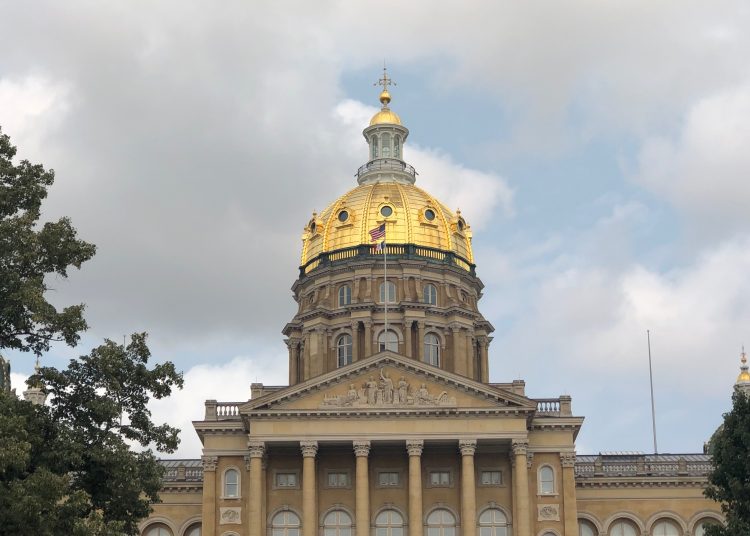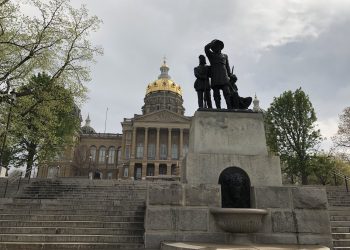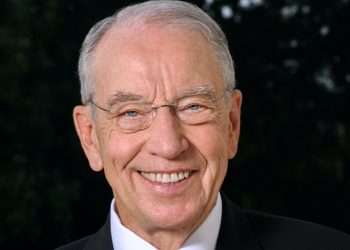DES MOINES, Iowa – The Iowa Legislature overwhelmingly approves the second redistricting map drawn by the Legislative Services Agency on Thursday.
The Iowa Senate passed the SF 621, the bill for the second redistricting plan, 48 to 1.
“After review of the second Redistricting Plan, I believe it corrects the failures of Plan One to redistrict the state in a compact manner with minimal differences in population. Despite years of fear-mongering about gerrymandering and claims the first map could not be improved, the Iowa Senate followed the process outlined in Iowa Code and a more compact map with better population differences has been approved. Senate Republicans look forward to continuing to serve the people of Iowa by delivering lower taxes and more pro-growth policies for the next decade,” Senate Majority Leader Jack Whitver, R-Ankeny, said in a released statement.
Democrats warned about potential gerrymandering despite Republicans never stating an intention to work outside the nonpartisan redistricting process. That criticism increased after Iowa Senate Republicans rejected the first map; some that happened three out of the last five times the state has redrawn its congressional, Iowa House District, and Iowa Senate District maps.
“This is a win for all Iowans who care about our government and about our ability to come together, solve problems, and improve people’s lives,” Senate Minority Leader Zach Wahls, D-Coralville, said in a released statement.
“As Democrats said throughout this process, Iowans deserve fair maps, without partisan interference, and without political amendments. We stood firm in defense of Iowa’s best-in-the-nation model for independent and non-partisan redistricting, and I’m glad our Republican colleagues agreed with us,” he added.
State Senator Ken Rozenboom, R-Oskaloosa, was the lone opposing vote in the Iowa Senate. He told The Iowa Torch that his vote was a protest vote.
“Iowa’s population changed something like 4 percent since the last legislative district map was changed. I don’t believe that minor change justifies the wholesale and drastic changes to those districts. As an illustration, my current Senate district, whose voters have elected me three times, changed in such a way that nearly 75 percent of those voters will no longer be my constituents. I don’t believe that drastic a change in rural Iowa is justified,” he said.
Rozenboom is in the newly drawn Senate District 44 with State Senator Adrian Dickey, R-Packwood, but insisted that was not the reason for his opposition.
“This isn’t about me. I don’t have to spend my winters in the legislature. I can spend my winters on a beach in Australia with my grandchildren. But I believe the process can and should be improved,” he added.
Twenty incumbents will have to face off against one another should everyone decide to run for re-election. Many legislators put off making that decision until after the new maps were drawn. There are ten open seats due to redistricting. There will be a special election in the current Iowa Senate District 1 as State Senator Zach Whiting, R-Spirit Lake, announced he was resigning from the Iowa Senate for an opportunity in Texas.

The Iowa House voted 93 to 2 in favor of the new maps.
“Iowa’s redistricting process has once again proven itself the gold standard and produced a nonpartisan, fair map for the people of Iowa. As is often the case, Democrats’ repeated accusations of Republicans’ intention to gerrymander have proved to be nothing more than fearmongering. Iowa House Republicans followed the process and delivered a fair map for the people of Iowa just as we said we would,” Iowa House Speaker Pat Grassley, R-New Hartford, said in a released statement.
Iowa House Minority Leader Jennifer Konfrst, D-Windsor Heights, said she was willing to support the map “sight unseen,” stating during the floor debate that she had complete confidence in the nonpartisan process.
State Reps. Tom Jeneary, R-LeMars, and Jon Jacobsen, R-Council Bluffs, voted against the second map. Both legislators were placed in districts with another incumbent. Jeneary (currently representing Iowa House District 5) will have to face State Rep. Skyler Wheeler, R-Orange City, (who represents Iowa House District 4) in a Republican primary in the newly drawn Iowa House District 3, where Wheeler may have an advantage.
Jacobson saw his district that encompassed rural Pottawattamie County split into four different districts (Iowa House Districts 11, 15, 16, and 19) and will face State Rep. Brent Siegrist, R-Council Bluffs, in the newly drawn Iowa House District 19.
“I’m a zealous advocate for Southwest Iowa. If Iowa had a panhandle, we’d be it because sometimes we are the redheaded stepchild in the state of Iowa,” Jacobsen said during floor debate. “And unlike any other county of our size of 90,000, west of the Raccoon River, we have singularly been disembodied.”
“I have constituents that live ten miles from me, some of who now will be up in Carroll County, some who will be down in the Missouri River. And with the flooding issues that we have now, our voices further diluted, we have no at-large representation in the county as a whole. We do not have any representative who could possibly represent a majority of the people in the county,” he added.
The new Iowa House District map places 38 incumbents in districts with one another. Some incumbents may opt to retire rather than face fratricide if their new district is unfavorable to their electoral chances. There will be 21 open seats with 20 open due to redistricting, and one, the new Iowa House District 90, will be open since State Rep. Christina Bohannon, D-Iowa City, is running for Congress in the newly drawn 1st Congressional District.
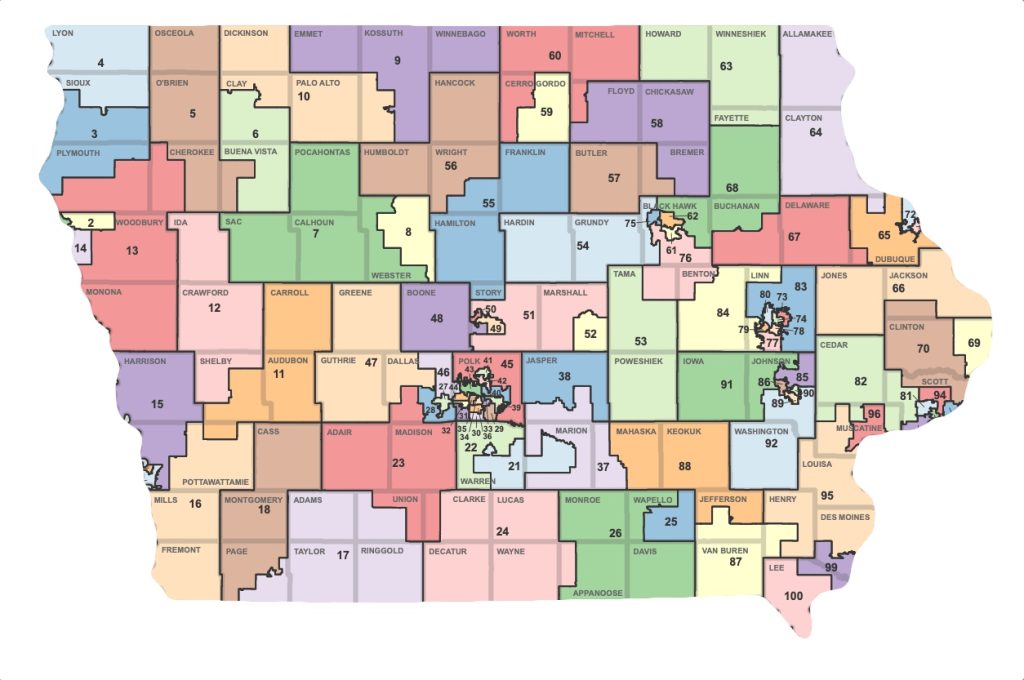
Gov. Kim Reynolds signaled her support of the second redistricting plan.
“Today’s decision by the Iowa Legislature to approve the second draft of the legislative and congressional redistricting maps is very encouraging. I am confident in how the process played out—just as the law intended, and I believe these new districts will fairly and accurately represent the citizens of Iowa for the next decade,” she said in a released statement.
U.S. Rep. Mariannette Miller-Meeks, R-Iowa, representing the current Iowa 2nd Congressional District, resides in the new Iowa 3rd Congressional District with U.S. Rep Cindy Axne, D-Iowa. She announced she would run for re-election but did not indicate whether it would be in the 3rd district or in the new Iowa 1st Congressional District, where most of her current district is located.
“Iowa’s reapportionment process is nonpartisan and serves the best interests of the people of our state. The Legislative Service Bureau staff members and our state lawmakers are to be commended for their hard work and commitment to a fair process. The new congressional boundaries have placed Congresswoman Axne and me in the same district. I have indicated that I will be a candidate for re-election. I will be evaluating the new districts to determine my next step, which I will be announcing shortly,” she said.
Should she run in Iowa’s 3rd Congressional District, that will mix up the Republican primary that is currently a three-way race between State Senator Zach Nunn of Bondurant, former State Rep. Mary Ann Hanusa of Council Bluffs (who now resides in the new Iowa 4th Congressional District), and Nicole Hasso of Johnston.
U.S. Rep. Ashley Hinson, R-Iowa, announced she would run for re-election in the new Iowa 2nd Congressional District that makes up 16 of the 22 counties in the current Iowa 1st Congressional District that she won in 2020 and represents in Congress.
“I am running for re-election in Iowa’s new 2nd Congressional District, and I am honored to have the opportunity to continue working for so many Iowans that I currently serve. When I first ran for Congress, I promised Northeast Iowans that I would be a fighter for working families, be a strong voice for rural America, and bring a dose of common sense to Washington––and I’m keeping each of those promises. With Speaker Pelosi and President Biden pushing disastrous socialist policies, there has never been a more important time to have a common-sense conservative in Congress, and I am just getting started fighting and delivering for Iowans,” she said in a released statement.
State Senator Liz Mathis, D-Hiawatha, also said she still plans to run against Hinson in the newly drawn district, tweeting that the seat is winnable for Democrats.
Three out of four congressional districts are competitive. Democrats have a 15,551 registered voter advantage in Iowa’s new 1st Congressional District, a 9,380 registered voter advantage in the 2nd, and 10,588 registered voter advantage in the 3rd. All three districts have a sizable independent voting block that is trending Republican. Republicans continue to have a stronghold in Iowa’s 4th Congressional District with an 84,747 registered voter advantage.
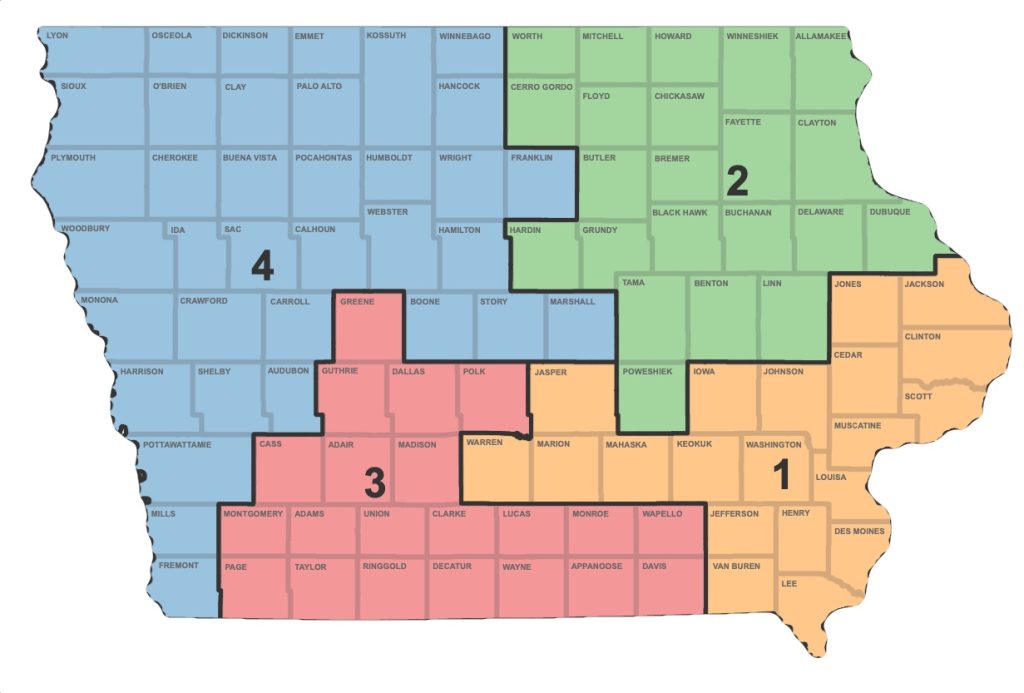
The Republican Party of Iowa applauded the passage of the second map.
“Despite Iowa Democrats’ attempts to politicize our nonpartisan redistricting process, Iowans can rest assured that legislative Republicans did their due diligence and passed a fair map that meets the highest standard of the law,” Republican Party of Iowa Chair Jeff Kaufmann said.
State Rep. Ross Wilburn, D-Ames, chairman of the Iowa Democratic Party, applauded the vote while digging at Republicans.
“Iowans made their voices heard and stopped Iowa Republicans from tampering with our gold-standard redistricting process,” he said. “Today was not just a win for Iowans, but a win for democracy.”



